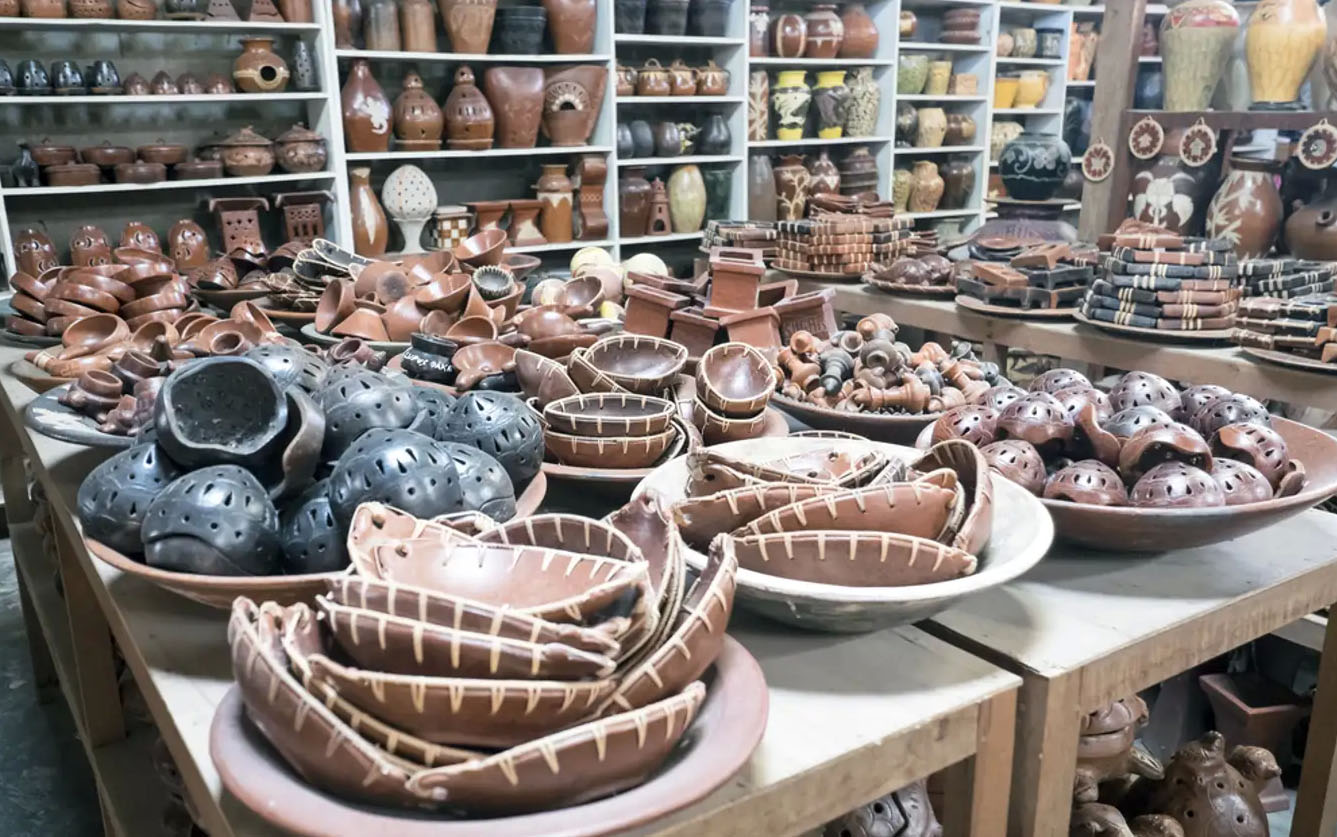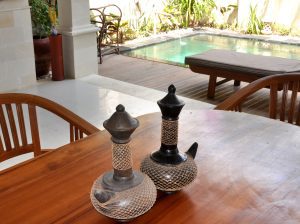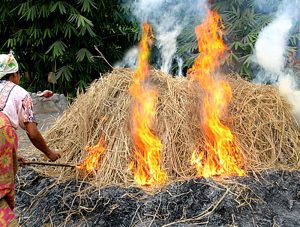Lombok's #1 Tourism Magazine
 Just east of the town of Masbagik there is a small Sasak village where time seems to have stood still; a village where horse and cart are still the main form of transportation and the people follow the time-honoured traditions of generations.
Just east of the town of Masbagik there is a small Sasak village where time seems to have stood still; a village where horse and cart are still the main form of transportation and the people follow the time-honoured traditions of generations.
The tiny village of Penakak is home to a distinctive form of pottery that has been passed down through the generations, from mother to daughter, since at least the early sixteenth century.
Most of the women in this village have little education, but their work is the backbone of their community, turning out beautiful pots and cooking utensils as their grandmothers did before them.
A specialty of the village is ceret maling, traditional earthenware water containers that have an ingenious design; hence the Indonesian name could be translated to “sneaky water pitchers”. The containers are filled from the base and the fluid is held inside a hidden inner chamber with no stopper or lid. The secrets of their manufacture are known only to the women who make them.
 The design made in Penakak is an exact replica of ceret maling displayed at the Mataram museum, dating to around 1,000 years ago.
The design made in Penakak is an exact replica of ceret maling displayed at the Mataram museum, dating to around 1,000 years ago.
In Masbagik, it is the women who make the traditional pottery and prepare the clay dug up by the men and ferried half a dozen kilometres by horse and cart. The men also support the women by gathering the grass, coconut husks, sawdust and timber needed to fire the open-air, ground kilns.
The men work hard, but it is the women’s pots that ensure the village’s livelihood. Much of the pottery produced here is sold in local markets and exported to Bali, allowing the people to support themselves with their traditional handicrafts.
In addition to the ceret maling, the women make mortar and pestles and traditional cooking ovens, as well as beautiful pots in all sizes, some of which are very large. The pots are worked by hand, using a large stone and a wooden paddle, and the women say the clay of Masbagik is finer than clay found in other parts of the island.
 Once completed, the pots are left to dry in the sun before firing. When they are dry, they are stacked in a pile together with coconut husks and wood shavings. The fire is then coaxed to a slow blaze, burning the moisture out of the clay and warming the pots enough to accept high temperatures without breaking.
Once completed, the pots are left to dry in the sun before firing. When they are dry, they are stacked in a pile together with coconut husks and wood shavings. The fire is then coaxed to a slow blaze, burning the moisture out of the clay and warming the pots enough to accept high temperatures without breaking.
Firing the pots requires skill and the instinct born of generations of working with the clay. If the fire is too hot, the pots will shatter; but if it is not hot enough, the shape will warp and the pot will revert to clay.
When the fire is under way, it is slowly fed over half a day with wood shavings, dried grasses, and straw and husks from the rice harvest. This covering burns and leaves a thick layer of ash which retains the heat. Temperatures during firing can reach up to 800°C; enough to cook the clay into a hard surface and change the colour to a rich terracotta.
Sometimes designs and patterns are etched into the clay by hand. A slip made from a mixture of water, fine clay and plant oils may also be applied and rubbed to a shiny finish with a piece of smooth stone.
Lombok pottery is recognised as an important art form on the island and is now sold in countries throughout the world. Even in small villages around Masbagik the pottery shops can arrange to export these lovely pots to your home country… and they are sold at a fraction of the prices you would pay in the west.